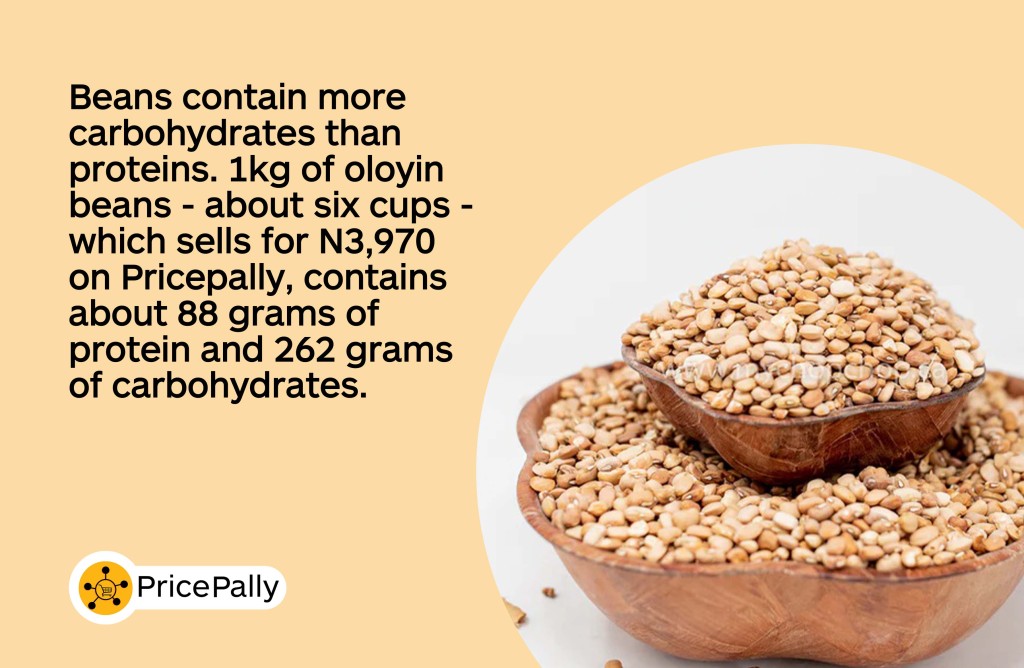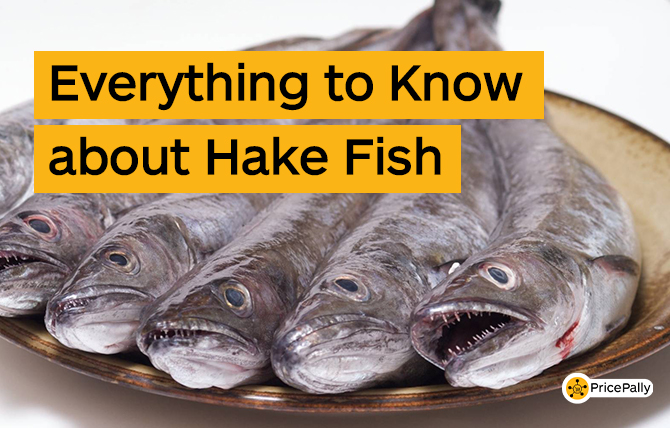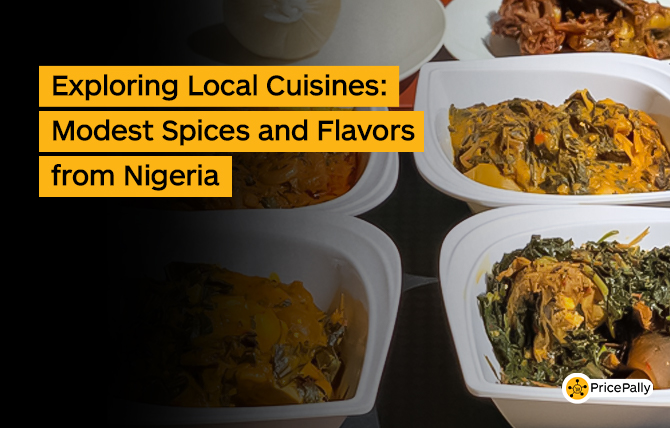If you’ve lingered long enough on X (formerly Twitter), you’d have seen at least one video of Aproko Doctor urging people to take water. Beyond the humour and bants, there’s a tendency for us to go through each day without consuming enough water. This is partly because we don’t always have access to clean water, and partly because we forget that water is an integral part of our diet.
Experts recommend that males consume 3.7 litres of water daily, and females consume 2.7 litres. But water isn’t the only thing to worry about. The United States Department of Agriculture (USDA) prescribes a daily intake of 1.5 to 2 cups of fruits for adult females and 2.5 to 3 cups for adult males. There are equal prescriptions for calorie intake, proteins, and fats.
In 2022, nearly 2.5 billion adults were estimated to suffer from one form of malnutrition. No, it’s not just about eating once a day. Malnutrition includes “includes undernutrition (wasting, stunting, underweight), inadequate vitamins or minerals, overweight, obesity, and resulting diet-related noncommunicable diseases.”
This shows that eating often doesn’t always mean eating well or right. Hence, we’ve prepared this article to help you figure out how to create a balanced diet. We’d revisit the seven classes of food, why a balanced diet matters, and what to know about calories.
What to Include in a Balanced Diet
A balanced diet should include all the nutrients your body needs to function properly. These nutrients come from:
Regardless of your eating habits or dietary preferences, you can develop a balanced diet routine by combining the right proportions of food intake. For instance, a vegetarian’s daily diet can include five portions of fruits (as opposed to the average recommendation of 3 cups), nuts and seeds rich in omega-3 fatty acids (walnuts, almonds, and pecans), low-sugar yoghurts, and plenty of water.
Bowl of mixed nuts. Source: Pexels.
The nutrients necessary for a healthy meal can be classified into seven (7) groups. They include:
Vitamins
Unlike macronutrients like carbohydrates, proteins, and fats, our bodies require vitamins in smaller amounts. Yet, they aren’t negligible. Vitamins significantly contribute to various bodily functions, including metabolism, immunity, and cell and tissue repair.
Vitamins are divided into two categories: fat-soluble (A, D, E, and K) and water-soluble (C and the B-complex vitamins). Fat-soluble vitamins are stored in the body’s fatty tissues and liver, while water-soluble vitamins are not stored and need to be consumed more regularly. You can source these vitamins from common fruits and vegetables like citrus fruits, strawberries, bell peppers, and potatoes.
Minerals
Minerals exist as both micro and macrominerals. Both varieties help build strong bones, create hormones, and keep our hearts working well. Unlike vitamins, minerals come from the earth or water and get into our food through plants and animals. Macrominerals are needed in larger amounts. These include calcium (found in milk, cheese, and vegetables), magnesium (in nuts, seeds, and leafy greens), sodium (in salt), and potassium (in bananas).
Trace minerals are needed in smaller amounts but are still very important. Iron, in red meat and beans, helps carry oxygen in our blood. Zinc, which boosts our immune system, is found in meat and nuts. Iodine, needed for thyroid health, is found in seafood and iodized salt.
Health tip: You don’t have to break your budget to stack your meals with vitamins and minerals; neither do you need to endure the stress of market runs. You can create your shopping list on PricePally and leave the market runs and delivery to us. And if you’re a busy 9-5er working multiple gigs with no time to cook, you can curate your fruit boxes by sending a direct message to the PricePally support team.
Carbohydrates
Can we say that we have a love-hate relationship with carbs? Love, because it’s all we seem to eat, and hate, because it’s the first thing we toss out of our meals when we think of healthy eating. Carbohydrates are our main source of energy. When we eat bread, pasta, rice, potatoes, our body breaks them down into glucose, which produces energy for our daily activities and helps brain functioning.
Each person consumes two types of carbohydrates: simple and complex.
- Simple carbohydrates: Sugars, found in sweets, fruits, and milk. They provide quick energy but can lead to energy crashes like sugar rush if eaten in large amounts.
- Complex carbohydrates: Found in whole grains, beans, and vegetables, give us long-lasting energy and help keep our digestion healthy.
Proteins
Here’s a fact you didn’t know about beans: beans contain more carbohydrates than proteins. 1kg of oloyin beans – about six cups – which sells for N3,970 on Pricepally, contains about 88 grams of protein and 262 grams of carbohydrates.

Have a friend who credits their huge protein intake to eating a lot of beans? Show them this.

Proteins are essential for building and repairing tissues in our bodies. Good protein sources include meat, fish, eggs, dairy products, beans, nuts, and seeds. Proteins can be animal-based or plant-based. Animal-based proteins, in foods like chicken, beef, and dairy, contain the essential amino acids we need. Plant-based proteins, in foods like beans and tofu, can also provide these amino acids when eaten in the right combinations.
Fats
There’s an ongoing debate about the health benefits of fried and processed foods. Whether you think there should be a ban/limit on these foods or not, the facts say one thing: fried foods contain trans fat, and trans fats are unhealthy. It’s best to avoid them whenever we can.
Saturated and unsaturated fats, though, are important for a healthy diet. They provide energy, help our bodies absorb vitamins, and support cell growth. Unsaturated fats are healthier and are found in foods like avocados, nuts, seeds, and olive oil. Saturated fats are found in animal products like meat and butter and should be eaten in moderation.
Dietary Fiber
We mostly consume dietary fiber as a form of carbohydrate. This class of food primarily contributes to a well-functioning digestive system. There are two types of fiber:
- Soluble fiber, found in foods like oats, beans, and apples, dissolves in water and helps lower cholesterol and control blood sugar levels.
- Insoluble fiber, found in whole grains, nuts, and vegetables, adds bulk to our stool and helps prevent constipation.
Water
Drink water. Why? One cup of clean water can nudge you out of a foul mood, fix constipation, lubricate your body joints, and regulate your temperature. Water transports nutrients and oxygen to cells, removes waste products, and lubricates joints. It also aids digestion and helps maintain a healthy balance of bodily fluids.
Don’t constrain your daily water intake to clean water alone. We also get water from the beverages we drink, such as water, milk, and juice, and also from the food we eat, especially fruits and vegetables.
If you work a tight schedule, keep a water bottle nearby. Fill it with water at the start of each day, and take breaks to drink gulps. Swing by a fruit store occasionally to add water-rich fruits to your pantry. Don’t wait until you feel dehydrated or fatigued before getting on your water-drinking game.
Learn about the essential food groups to add to your shopping list.
Why a Balanced Diet is Important
A balanced diet supplies all the essential nutrients you need for daily performance. Stepping away from a healthy diet leaves you vulnerable to minor conditions such as constipation and indigestion, and to serious conditions like diabetes, obesity, or stunting.

Children who don’t eat a balanced diet may experience developmental problems, which then affects their academic performance as well as their cognitive abilities. Adults with poor eating habits are susceptible to heart and liver diseases, etc. A 2016 report by the Center for Science in the Public Interest highlights diet as a contributing factor to four of the ten leading causes of death.
Eating well makes you feel good. Your body is shielded from potential diseases, and you consume the right portion of nutrients needed per time.
Health tip: A balanced diet also makes you feel more alert, increases focus and concentration, and helps you think better. The next time you feel tired at work, that may be the cue to go eat a healthy meal.
About Calories
Calories refer to the amount of energy gotten from a food portion. The number of calories you consume depends primarily on who you are and what you do. The average person needs 2000 calories daily to maintain body weight, though males often need more than females.
The Department of Health and Human Services prescribes this guideline for males and females of different age groups.
| Person | Calorie Requirements |
| Sedentary children (2-8 years) | 1000 – 1400 |
| Active children (2-8 years) | 1000 – 2000 |
| Females (9-13 years) | 1400 – 2200 |
| Males (9-13 years) | 1600 – 2600 |
| Active females (14-30 years) | 2400 |
| Active males (14-30 years) | 1800 – 2000 |
| Sedentary females (14-30 years) | 2800 – 3200 |
| Sedentary males (14-30 years) | 2000 – 2600 |
| Active people (30+ years) | 2000 – 3000 |
| Sedentary people (30+ years) | 1600 – 2400 |
When planning your calorie intake, don’t statpad. That is, don’t eat lots of food that contains only calories but adds little nutritional value. This calorie type is called empty calories, gotten from foods like cakes (oops), soda, ice cream, pizza (yikes), and chips. Instead, spread your calories across the seven food classes.
This doesn’t mean you should rule out processed foods, packaged foods or even pizza. A homemade pizza with lots of vegetable toppings can be a healthy alternative. You can also consume healthy packaged meals like adult cereals, coconut milk, and nuts.
You can start shopping for your cereals from Pricepally right away. With us, you don’t have to choose between retail shopping or bulk buying. You can leverage Pally to share food prices with friends, colleagues, or other shoppers.
See how Pally works, and start shopping for your healthy meals today.
Frequently Asked Questions
How do I create a balanced diet?
Start by prioritizing fruit intakes. Aim for 3 cups of fruit daily (see this list for the recommended fruit portions). Eat carbohydrates high in fiber and starch, like potatoes, pasta, or bread. Drink lots of water, and restrict consumption of foods that supply empty calories.
What are the essential nutrients I need in a healthy diet?
Your meals should spread across the seven classes of food: carbs, vitamins, minerals, fats, dietary fiber, proteins, and water. For instance, you could make a breakfast of oats – topped with fruits – and bean cake, snack on a fruit bowl and non-dairy milk during the day, and have rice with fish/beef and efo riro for dinner.









How Pricepally is reinventing Bulk buying Fresh-farm foods in Nigeria.
PRICEPALLY FOOD PRICE INDEX
WORLD EARTH DAY 2021
Will Standardized Food measurement become widely adopted in Nigeria?
Your Guide to Saving More on Groceries in 2026 with PricePally
Kuda Partners With PricePally to Help Nigerians Save More on Fresh Food
Bulk Food Supply for Businesses: How PricePally’s Loyalty Rewards Program Helps You Save More and Grow
PricePally PriceLock FAQs: How to Beat December Food Inflation in Nigeria